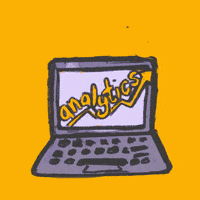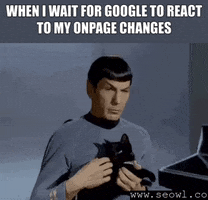Digital Marketing: How to Crush It (& Make $$) In 2025!
Diving into the digital marketing world for the first time can feel daunting, evoking emotions similar to your first day at a new school, a new job, or taking the leap to start your own eCommerce business.
But don’t worry, you’re not alone. No one has all the answers when they first take the plunge into digital marketing.

Our guide will take you by the hand to show you everything you need to get started.
We’ll give you the tools, insights, and strategies to crush digital marketing and turn your online eCommerce business into a powerful, cash-generating machine.
Let’s go!
What is Digital Marketing?
Digital marketing services cover all forms of inbound marketing delivered through digital channels.
These include websites, social media, search engines, email, and mobile apps.
Gone are the days of traditional marketing tactics like business cards, billboards, and radio advertising.
As of 2021, more than half the global population uses the internet. So you want to tap into that market, right?
But you must be wondering...
What Are the Benefits of Digital Marketing?
Did you get into your business because you want to “do what you love?”
I’ve got news for you.
You could be the most incredible personal trainer, but you won't prosper if you can't market yourself.
You may be a sensational freelance writer, but you’ll only teeter on the edge of success if you can’t grab your target audience’s attention.
You could wait around for someone to stumble upon your goods or services. (Spoiler alert: they won’t.)
So, instead, taking advantage of a digital platform in business lets you take the reins and steer your business in the right direction.
Digital marketing helps you reach a larger audience, build brand awareness and set yourself as an authority in your industry.
And, it doesn’t matter what industry you are in. You can use digital marketing to discover more paying customers in 2024 and beyond.
1. Target Your Best Prospects
Understanding your target audience is essential if you want to crush it as a digital marketer.
We’re not talking about site visitors who are just browsing; you want to focus on those who are searching for something in particular.
Your products. Your services.
The more accurate your research, the more your efforts will lead to successful conversions.
Use marketing tools like Google Analytics to research your buyer persona. Determine their demographics, interests, buying intent, and priorities.
Then, design your marketing strategy to reach those who will devour what you have to offer.
2. Digital Marketing is Cost-Effective
Whether you want to spend $200 or $5000, you’re in the driver’s seat. You control how much money you allocate to your digital marketing campaign.

Digital marketing reaches people at lightning speed, and the results are measurable.
So watch how a particular digital marketing channel performs, adjust your budget as you go, and direct your money towards the top converting channels.
The highest cost will be the time it takes to develop, test, and put strategies in place.
But you know what?
It will be well worth the effort.
3. Compete With Bigger Brands
Bigger isn’t always better.
If you’re a small business, you may feel intimidated competing with major brands in your industry.
However, a digital marketing tool can level the playing field and help you not just compete with the big boys — but potentially outrank them.
How is that possible?
Google doesn’t care about size. Google search prioritizes sites that deliver the most relevant content to searchers.
4. Measure Your Digital Marketing
One of the most significant tools to measure digital marketing activity is marketing analytics tools which provide real-time results.

For example, you can monitor the number of clicks, views, shares, impressions, and how long a reader spends on your page.
Decide on a strategy that best fits your business. Then, the power is in your hands to adjust it as you see fit and measure the results.
Use Google analytics tools to measure the following:
Web traffic
Track your web traffic to help you determine which digital marketing channels you should prioritize.
You can learn precisely how many people visited your site, which pages they visited, what device they used, and their location.
These insights can reveal how to attract more visitors. Then, use it to focus on doing what works for your conversion rate and eliminate what doesn’t.
Content engagement
Engage your customers and prospects by creating great online content to get your brand noticed.
But, how do you measure that engagement?
Helpful metrics to monitor include “average time on page,” “bounce rate,” and “exit rate.”
You can ascertain if your content is engaging enough to keep readers on your site or if they decided it wasn’t what they were looking for and left.
Identify buying trends
Marketing attribution modeling allows you to stalk your customers online.
But not in a creepy way.
You can trace every touchpoint of a customer’s journey — from when they first clicked to the final sale.
Use attribution modeling to:
- Track the impact of each online marketing channel and how it leads to conversion
- Allocate your budget to the best-performing channels and remove any underperforming campaigns
- Understand buyer behaviors and determine marketing tactics to acquire new leads and increase conversions.
Now you can see how digital marketing gives you a chance to compete with — and potentially annihilate — the competition.
But, what are the types of digital marketing you can use in your strategy?
Types of Digital Marketing
To stand out from the crowd in an already saturated digital landscape, you’ll need to incorporate different marketing strategies.
No one type of digital marketing is better than the other. So instead, choose what aligns with your specific business requirements — and your target audience.
Use a combination of these digital marketing examples to supercharge your marketing campaign:
1. Pay-Per-Click Advertising (PPC)
Kick-butt content will help users find you in organic web searches.
But using PPC advertising will see you leapfrog to the top of search engine results pages (SERPs).
The most popular type of PPC is Google Ads, where you can pay for prime real estate on Google’s SERPs. You pay a price “per click” of any ads you place.
33% of searchers click on a PPC ad because it directly answers their search query. So, tailor your ads to target audiences when they enter specific search terms.
2. Search Engine Optimization (SEO)
SEO involves optimizing your site’s content, technical setup, and reach to achieve a high ranking in SERPs.
So, a strong SEO marketing strategy is a precious commodity in the digital marketing world.
Google dominates the search engine market, maintaining a 92% market share as of 2021.
And if just thinking about search engine marketing sends you into a terrifying tailspin, don't panic!
Ahrefs, the industry leader in SEO marketing tools, offers an SEO training course through their Ahrefs Academy.
It's 100% free and they have a staggering fourteen lessons on essential topics such as keyword research, on-page SEO, link building, and more!
Approach SEO to drive traffic to your site in the following ways:
On-Page SEO
On-page SEO focuses on your content “on the page.”

Secure some of that prime real estate by researching keywords for their search volume and answering searchers’ queries.
Off-Page SEO
Off-page SEO is the practice of using backlinks, where other authoritative sites link back to you.
Acquiring quality backlinks is crucial for off-page SEO success.
Other sites linking to yours is a vote in your site’s favor. Google assumes the more popular a page is, the more valuable it is to searchers, labeling that site an authority.
If other brands recognize your expertise by linking back to you, Google rewards you by scooting you up the SERP rankings.
Technical SEO
Technical SEO involves helping engine spiders crawl and index your site to improve organic rankings.
Search engines support websites that display specific technical characteristics. These include a fast loading time, a secure connection, and a responsive design.
And, if the idea of technical SEO sounds like a nightmare, our friends at Ahrefs have got you covered here as well. Use their — again 100% free — Ahrefs Webmaster Tools to analyze your website for SEO insights, strategies, and tips to get your site up to snuff.
3. Content Marketing
Content marketing serves to educate, engage and inspire consumers who are seeking information.

It shifts the focus from promoting your product to promoting your value.
Creating relevant content can secure you as an authority in your field and a trustworthy source of information.
As a bonus, your content will inspire your reader to buy.
Generate brand awareness through blogs, social media posts, ebooks, infographics, and whitepapers.
4. Sales Funnel
Creating a sales funnel is a great way to introduce your digital product or service to prospective customers — without the hard sell.
Marketing funnels gently guide your prospects through stages that eventually lead to conversions, instead of putting pressure on them to buy right away — which could lead them to walk away entirely.
5. Landing Page
When you do want a potential customer to take action, building a landing page is a crucial digital marketing strategy.
Landing pages lead your prospects to hit that “buy” button.
Landing pages are also a great way to engage with your content by asking your audience to provide their email address in exchange for signing up for a newsletter.
6. Social Media Marketing (SMM)
A social media platform is excellent for promoting your brand, boosting digital engagement, and generating leads.
Consider using the following social media platforms in your campaign:
Facebook is the most prominent social network worldwide. As of the first quarter of 2021, it averaged 2.85 billion monthly active users.
Tap into that market and create an irresistible Facebook Ads campaign.
Customize videos, image posts, or slideshows. Facebook publishes to users’ feeds who match your targeted audience.
Use Twitter to promote your brand and advertise new stories, products, and content. As of the first quarter of 2019, Twitter reached an average of 330 million monthly active users.
You will find greater social advertising potential if your target audience:
- Is between 18 and 49 years old
- Is college-educated
- Are urban dwellers
- Earns a higher income
In 2021, the number of LinkedIn users worldwide amounts to about 774.6 million. Use these numbers to your advantage and create PPC ads that drive professional audiences to your site.
You only pay for the ads that work either by click or per impression. Generate and track the number of leads from your ads with conversion tracking.
Consider your target audience before you create ad campaigns on any of these platforms.
You can also advertise on Instagram, Pinterest, Snapchat, YouTube, and TikTok.
(Pro Tip: an excellent social media marketing strategy is finding influencers to promote you. We've got you covered with our ultimate guide to influencer marketing!)
7. Email Marketing
No, email marketing has not gone the way of the dinosaur.

It is still one of the fastest and most effective ways to reach customers.
Email marketing helps you not only win new customers but nurture your loyal followers.
Create engaging, informative, and relevant content that won’t get swallowed up in your subscriber’s inbox.
The more compelling your emails, the more likely readers are to open them.
Types of email marketing emails include:
- Blog subscriptions
- Follow-ups
- New customer welcomes
- Seasonal promotions and exclusive offers
8. Marketing Automation
Marketing automation takes the humdrum out of mundane, repetitive tasks.
For example, automate email newsletters, social media post scheduling, and text messaging.
Use marketing automation software to follow prospects, segment them into specific groups, and send personalized content.
A well-implemented program holds prospects by the hand at each stage of their shopping journey and sees them come out as a customer on the other side.
9. Affiliate Marketing
Affiliate marketing is a performance-based process where you receive a commission for promoting another company’s products or services.
You (the affiliate) receive a unique link so that companies can record the traffic that came from your site. If a customer makes a purchase, you receive a reward.
As an affiliate, you can promote products or services from many different companies and earn commissions from all of them.
(Editor's Note: Don't miss our picks for the best affiliate marketing tools and affiliate marketing software!)
Now you know a little more about the main disciplines of digital marketing.
So, now what?
It’s time to build your strategy.
How to Implement Your Digital Marketing Strategy
Once you’ve decided which types of digital marketing you want to incorporate into your strategy, you now need to focus on the following:
1. What Are Your Goals?
When you first get started, understanding the goal you’re trying to hit is the first step to reaching it.
The goals you set must be measurable and well-defined.
An example of a weak marketing goal:
Boost website conversions in 2021 and create two promotional offers.
Why is this a weak goal? Because you can’t measure its progress!
So how do we turn that into a measurable, well-defined goal?
Here’s how:
Boost website conversions by 20 percent in the last quarter of 2021. Create two promotional offers: a free marketing report and an e-book. Upload them by November and December, respectively.
Now, your progress is measurable.
2. Who Is Your Target Audience?
Digital marketing provides the opportunity to target specific audiences.
But, if you haven’t taken the time to understand your audience, you’ll struggle to deliver a message that speaks to them.
For example, perhaps your Instagram audience engages better with funny memes and TikTok videos.
But your LinkedIn audience is looking for more informative, tactical advice.
For an effective marketing strategy, you'll need to adjust your content to appeal to different audiences.
Use Think With Google tools to gain helpful consumer insights and research industry trends.
3. What Is Your Budget?
Your budget will depend on what elements you're looking to add to your digital marketing strategy.

Suppose you're focusing on SEO and creating content for a pre-existing website.
Then, your primary focus should be creating high-quality content that your audience will want to consume.
In which case, all you need to invest is your time.
If you’re planning on PPC advertising, you’ll need to increase your budget.
The best part?
How much you spend is up to you.
4. Paid and Free Marketing Strategies
Find a balance between both paid and free marketing strategies to be truly effective.
You’ll find the best results by building your audience profile with quality content that will attract and ultimately convert leads.
Utilizing a paid marketing strategy such as PPC can lead to faster results.
Although, not all PPC platforms are equal. You need to consider which platforms are more suited to your target audience.
5. Create Quality Content
First, let’s look at the benefits of creating quality content.
You'll attract more traffic, reinforce your social media presence and position yourself against other brands in the industry.
Great content can also help you rank for long-tail keywords. These are specific keyword phrases that are more than three words in length.
Almost 92% of all search queries are long-tail keywords. Therefore, focusing on including them in your content is crucial in attracting more eyeballs to your site.
Long-tail keywords help narrow the focus of the search result to display more specific results and are easier to rank.
Creating engaging content will help you gain more customer loyalty, and in the process, you’ll also build your brand loyalty and your business profile.
Your content can include blog posts, PPC ads, email newsletters, and social media posts.
6. Optimize For Mobile
Searchers perform over 40% of online transactions using a mobile device. So it is essential you create both desktop and mobile-friendly pages.

Optimizing for mobile marketing increases user engagement, and Google rewards you with a boost to your ranking in SERPs.
Create a hassle-free shopping or browsing experience for people on the move, and you’ll go a long way towards achieving the results you’re hoping for.
So, what now?
Ready To Try Digital Marketing?
Follow our digital marketing guide to build a strong, effective digital marketing strategy.
With more than a billion websites on the internet, you must find a digital marketing tactic to stand out from the crowd.
Start simple. Don’t be afraid to try different techniques. Then, monitor how your strategy performs, so you can focus on what’s working and remove what’s not.
Over time you’ll gain more confidence, and your strategy will begin to pay dividends.
Experiment. Enjoy the process.
And watch your following — and your digital marketing success — grow.
.
Kirsty Wilson is a Smart Blogger-certified content marketer and self-taught margarita aficionado. With a passion for Digital Marketing and a knack for crafting captivating Landing Page Copy, she sprinkles her Aussie charm and cheeky humour across lifestyle, travel, and marketing blogs. Currently adventuring through Mexico, she documents her solo travels to inspire fellow Gen-X gals to #SeizeTheDay!